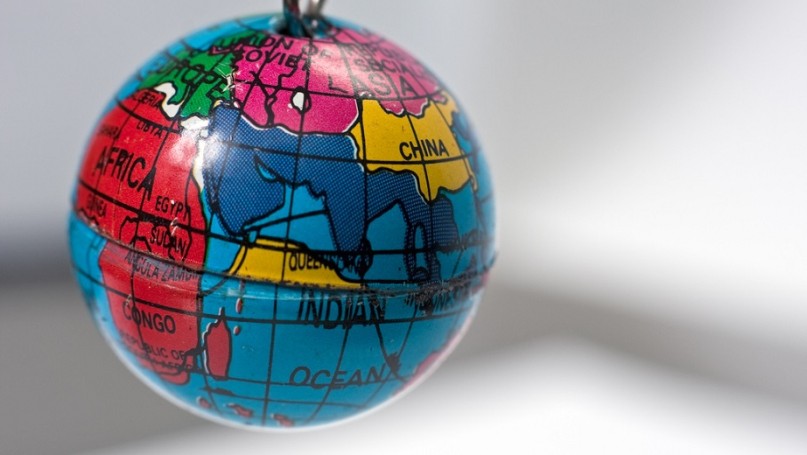
Afrasia: A Tale of Two Continents
By: Seifudein Adem and Ali A. Mazrui
Rowman and Littlefield, 2013
The Kenyan writer Ngugi wa Thiong’o recently noted the importance of ‘enabling conversations between African, Asian and South American languages’. [1] This came at a time of renewed interest in the phenomenon of ‘Afrasia’, seen in such publications as Gaurav Desai’s Commerce with the Universe: Africa, India, and the Afrasian Imagination (New York: Columbia University Press, 2013). Another such work is Afrasia: A Tale of Two Continents, co-authored by the eminent Kenyan scholar Ali Mazrui and Seifudein Adem, an Ethiopian scholar with extensive Japan knowledge.
This is not, strictly speaking, a ‘Tale of Two Continents’ so much as a number of eclectic offerings about parts of Africa and parts of Asia, crossing time, space, races, and cultures. Indeed, it is rewarding precisely for this reason, and for trying to move scholarship forward in ways that, building on broad historical foundations, endeavour to be fresh, critical, and self-reflexive.
The book offers a colourfully presented and decidedly mixed, wide-ranging menu, rather than a sustained argument. While formally organized into broad thematic sections – history; race, religion, and diplomacy; nationalism, decolonization, and development; war and peace; migration and ‘role models in the era of globalization’ – in practice, its diverse chapters are arranged in an episodic, uneven manner. History is woven into the text throughout, but not in a systematic way, as seen in the first chapter, ‘Africa and Asia in the Postcolonial era’, which breathlessly fast-forwards from the 1955 Bandung Conference to 9/11 in barely three pages.
Culture is another continuity thread linking many chapters, including those concerning Japan-Africa relations (‘Is Japan’s Cultural Experience Relevant for Africa’s Development?’). Many chapters, rightly, do not take ‘Afrasian’ relations in isolation from Africa’s history in the world, thus offering a more rewarding, albeit far-ranging, scope (as seen in such chapters as Mazrui’s ‘John Locke and Mahatma Gandhi in African Resistance’, or an appended essay ‘From Osagyefo Nkrumah to Nana Obama: Between the Post-Colonial and the Post-Racial’).
Some subjects – diaspora and migration, for instance – receive interesting treatments, even if these are not rendered directly applicable to current Indian or Chinese social relations within different parts of continental Africa today. This is a shame given that this is arguably one of the most interesting and important themes and, in turn, involves the emerging dynamics of Africans in China. It is not, however, a constraint; the book’s historical-cultural orientation helps to situate these in time, enable comparisons with more up-to-date trends, and address issues not commonly covered in the literature oriented to current migration dynamics.
It is a measure of the book’s wide range that some chapters bypass Africa entirely. ‘Japan and the Iraq War’, for example, examines Japanese foreign policy, and its relevance to Africa is indirect. While such background is instructive, it is a shame that there is more on the former Japanese Prime, Minister Koizumi, than the country’s current Prime Minister, Shinzo Abe, and Japan’s more recent efforts, notably seen in the fifth Tokyo International Conference on African Development in June 2013, to stimulate greater Japanese corporate engagement with Africa. While no systematic or in-depth treatment is offered, the cumulative effect is nonetheless sufficient to help put emerging China-Japan relations in Africa in perspective, something that was prominently visible in January 2014 thanks to high-level Japanese and Chinese tours in the continent (Shinzo Abe visiting Cote D’Ivoire, Mozambique, and Ethiopia, and Chinese Foreign Minister Wang Yi visiting Ethiopia, Djibouti, Ghana, and Senegal).
An attractive part of the book is its effort to question discursive aspects of China-Africa relations. Adem’s concluding chapter notes a risk ‘that the more one reads about China in Africa these days, the less one knows about it’ (p. 371). In seeking to offer a more critical theoretical treatment of discourses and the social construction of political life, he begins to engage a fundamental area of inquiry and one that has not yet received analytical attention commensurate with its political importance. While Adem’s categories of ‘Sino-pessimists’, ‘Sino-pragmatists’, and ‘Sino-optimists’ are somewhat general and, as he notes, difficult to separate in practice, the intent is laudable and contributes to a comparatively small, but growing, conversation on this theme.
Afrasia: A Tale of Two Continents will likely benefit those with some familiarity with its subject areas more than those new to, or starting to engage, its core themes. Overall, it offers an enlivening and unconventional contribution, with the potential to catalyse further work in positive ways. Its critical invocation of the need for a discourse about discourse on Africa’s relations with China, Japan, or India points the way to promising scholarly directions, including, as Ngugi wa Thiong’o would like to see, ways that go beyond the age of European empires and post-colonial influence. This can only be a good thing, especially if it catalyses further such insightful works by leading African scholars that properly enrich and advance these avenues of enquiry.
[1] Ngugi wa Thiong’o, ‘Asia in My Life’, Chimurenga, 15 May 2012.